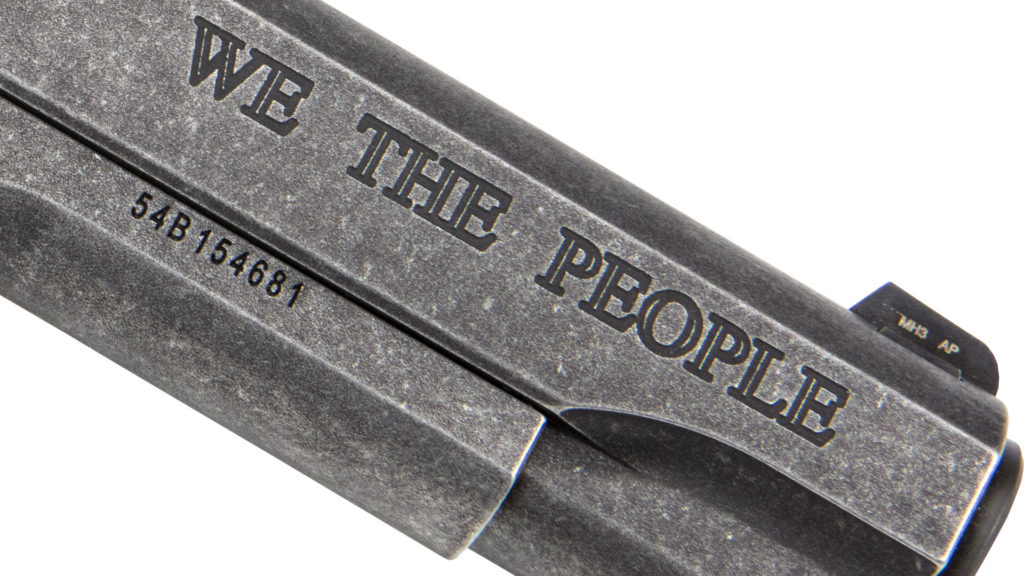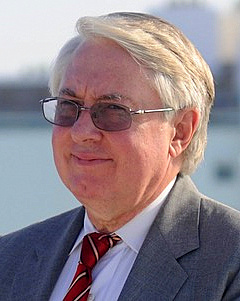
Madison’s draft of the Second Amendment declares that “the right of the People to keep and bear arms shall not be infringed”. He could have left out “of the People” without loss of meaning if he intended to guarantee that natural right to all. Alternatively, he could have defined the class of protected persons with some other term. For example, the Third Amendment pertains to “the Owner”. The Fifth Amendment reads “No person . . . “ The Sixth Amendment refers to “the accused”.
Consistency in constitutional interpretation precludes assuming any word to be happenstance. And, of course, the ratifying generation accepted this limitation of right to “the People”. Regardless of whatever might have been on anyone’s mind in the 18th century, the Second Amendment was written and ratified with this constraint which we may not sweep under the rug.
Today, the debate concerning “the People” is focused on whether the right was intended to be limited to the militia. Instead, I wonder who Madison and the founding generation understood would be excluded from the class “the People”. (On occasion, the militia included a few individuals who would not have been construed to be full-fledged members of the political community.)
A 16th century perspective would imply that native Americans would be excluded from the class “the People”. However, this hypothesis is unpersuasive in that, by the 18th Century, it was clear that a policy of “no guns for Indians” was unnecessary and impractical. Hostile Indians had been driven far from territories well populated by colonists. Belligerent Indians on the frontier were being supplied with arms by French and other traders beyond the control of the English colonies. A 19th century perspective would imply that slaves and free blacks might be excluded from “the People”. While obviously true, it’s difficult to imagine that this consideration was high in the founders’ minds. Slaves were under the absolute control of their masters. Few Blacks were free and these were not deemed any threat in the 1780’s.
What was fresh in the minds of the founding generation was the Revolutionary War. Only 1/3 of the population were thought to have favored independence. Another 1/3 were indifferent. The remaining 1/3 were Loyalists and most of them were still around in the 1780’s. Revolutionaries disarmed Loyalists without the slightest compunction.
The hypothesis in this essay is that the right to arms was reserved to “the People” to preserve the majority’s power to disarm any who might not be loyal to the Constitution. This seems plausible for a federal government intent upon preserving and defending the Constitution. It seems incongruous to believe that the founding generation intended to allow an ambitious government to undermine the Constitution by disarming the People who ordained and established that document.
Today, as in the early 20th Century, there is a struggle for power between Progressives and Conservatives on opposite sides of the political spectrum. Control over our government shifts back and forth, or so it seems to partisans in the struggle. What is objective fact and what is perception is difficult to discern in politics. But it is clear that perception drives sentiment.
According to the Marbury v. Madison doctrine of Constitutional interpretation, the advocate able to persuade a majority of a Court’s justices prevails in the debate. Imagine if Conservatives captured a majority of seats on the Supreme Court, along with both houses of Congress and the White House. The question might arise as to the Constitutionality of a law disarming seditious inhabitants of the United States. Judges might be authorized to ask suspects: “Are you now, or ever been, a member of any Radical organization?” And, thereupon, issue an Extreme Risk Confiscation Order stripping any such suspect of his arms. Would Progressives be happy that a tool they wanted to use for their ends turned into a means Conservatives could use against them?
Such was the problem faced by abolitionists and Republicans before and after the Civil War. Supporters of Southern interests sought to outlaw concealed carry, or any carry for that matter, in part to prevent free blacks and political opponents from being able to defend themselves against extra-legal violence. As Karl Marx wisely implored his readers, “the workers must be armed and organized. The whole proletariat must be armed at once with muskets, rifles, cannon and ammunition, and the revival of the old-style citizens’ militia, directed against the workers, must be opposed.” Likewise, Chairman Mao declared: “Political power emerges from the barrel of a gun.”
To return to contempory usage, Progressives, as well as Communists and Democratic Socialists, see their political-economic visions as the inevitable course of history. Nevertheless, the dialectical ebb and flow of political power causes the “inevitable” to be reversed at times. Those committed to gun control advocacy should bear in mind that it is not inevitable that they will always be in control.
When Conservatives hold power, the interpretation of “the People” in the Second Amendment could shift the balance of power against Progressive objectives. Once accomplished, history shows that such change is not easily reversed.
The only policy that would be intrinsically resistant to power struggles among factions seeking to rule over an unarmed majority would be universal arms ownership, as is mostly the practice in America, Switzerland and Israel. In reverse order, Israel has near universal conscription of both men and women. While off-duty, those in service often carry their arms. After completing service, they are often licensed to carry government-owned arms. Switzerland has universal male conscription with a long period of reserve status. After military service is completed, veterans are permitted to keep their rifles. And, of course, in America we take the “right to keep and bear arms” as a badge of citizenship. Some judicial or quasi-judicial act is prerequisite to losing this right.
There is an important distinction between rights and privileges. A right is held generally by members of a class, e.g., citizens inhabiting a state enjoy the right to vote. A privilege is granted to specific individuals.
The line between a right and a privilege is often obscure. A privilege is often identifiable by the prerequisite of a license in the form of a certificate. Even so, the right to vote has traditionally been evidenced by a voter registration card. We speak of the privilege of operating a motor vehicle on public roads as evidenced by a driver’s license.
We can say with a high degree of confidence that holding a “right”, like the Second Amendment assures, precludes most tests or qualifications prerequisite to lawfully keeping and bearing arms. Constitutionally, one could be obliged to evidence membership in the class “the People” (however that broad term is defined). For example, one could be obliged to evidence having reached the age of majority, whether that might be defined as 16, 18 or 21. But on meeting the definition, one should enjoy the “the right” of “the People” without additional tests.
A citizen may be “dis-abled” of a right by law upon conviction of certain crimes or if adjudicated incompetent. Any such act of government must be held to strict standards of legal due process. We would not find it acceptable to strip an adult citizen of either the right to vote or to keep and bear arms based on a conviction for jay-walking or having an IQ below 123. We must be concerned with the propensity of government to excessively limit the standards for exercising the rights of citizenship.
People with felony convictions account for 8% of the population, that is, one-twelfth of “the People” can be denied their rights to vote or keep arms on this criterion of dis-ablement. That figure is small enough, and for a generally accepted reason, not to be alarming. However, 33% of Black males are felons. What if those convicted of misdemeanors subject to sentences of 2 or more years in jail and domestic violence crimes were added to that figure? The fraction of dis-abled members of this minority group might exceed 40%.
When should we begin to wonder whether this minority constituency would become unfairly deprived of their sovereign rights? As Thomas Jefferson put it: “[W]henever any Form of Government becomes destructive of these ends, it is the Right of the People to alter or to abolish it, and to institute new Government, laying its foundation on such principles and organizing its powers in such form, as to them shall seem most likely to effect their Safety and Happiness.”
The foregoing may illuminate some of the implications of the Second Amendment’s reference to “the People”. It should be out of the question for rights, such as to keep and bear arms, to be limited to arbitrary sub-classes such as those formally enrolled in state militias, sworn police officers, those privately employed in protecting the wealthy, or those who are left-handed.
The Supreme Court held in Heller v. D.C. that “the enshrinement of constitutional rights necessarily takes certain policy choices off the table.” Thus, the only truly politically correct approach to Second Amendment rights is near universal, even-handed, natural qualification with very limited exceptions. That requires, essentially, a “shall-issue” approach to the right of all qualified Americans to keep and bear arms.
.
.

—‘MarkPA’ is trained in economics, a life-long gun owner, NRA Instructor and Massad Ayoob graduate. He is inspired by our inalienable rights to “life, liberty and the pursuit of happiness” and holds that having the means to defend oneself and one’s community is vital to securing them.
